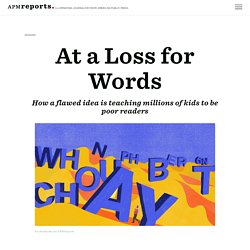

4 scaffolding strategies to improve literacy skills. As an educator with 30 years of experience in North Dakota’s public schools, I’ve witnessed students enter my classroom with varying degrees of readiness.

In an effort to create more equitable instructional opportunities, I have started to integrate scaffolding into my regular classroom activities. According to Pauline Gibbons (2015), a scaffold is a temporary support a teacher provides to a student that enables the student to perform a task he or she would not be able to perform alone. The goal of scaffolding is to provide opportunities for accommodating students’ individual abilities and needs as they learn and grow. It is important to note that scaffolding is fundamental to all effective and equitable teaching, and that the edtech resources many educators currently have access to support the integration of scaffolding into instruction.
Here are four scaffolding techniques I use, and some of the resources that support them: 1. ESL English Language Learning - Adult Literacy - Listening & Reading - Audiobooks - Stories. Rif. Stacy Tornio, Author at WeAreTeachers. Home - miregistry. Starter Teachers: A methodology course for the classroom. Short stories for kids. Wwc foundationalreading 070516. (PDF) Why Elementary Teachers Might Be Inadequately Prepared to Teach Reading. (PDF) Teachers’ Knowledge about Beginning Reading Development and Instruction. Dyslexia and the Brain: What Does Current Research Tell Us? Click the "References" link above to hide these references.

Adams, M.J. (1990). Beginning to read: Thinking and learning about print. Cambridge, MA: MIT Press. American Optometric Association. (2004). The use of tinted lenses and colored overlays for the treatment of dyslexia and other related reading and learning disorders. Aylward, E.H., Richards, T.L., Berninger, V.W., Nagy, W.E., Field, K.M., Grimme, A.C., et al. (2003). Blachman, B.A., Schatschneider, C., Fletcher, J.M., Francis, D.J., Clonan, S.M., Shaywitz, et al. (2004).
The Yale Center for Dyslexia & Creativity - Yale School of Medicine. The Science of the Spoken and Written Word. Ten Myths of Reading Instruction - SEDL Letter, Putting Reading First, Volume XIV, Number 3, December 2002. Home | SEDL Letter Archive by Sebastian Wren Published in SEDL Letter Volume XIV, Number 3, December 2002, Putting Reading First Myths 1 | 2 | 3 | 4 | 5 | 6 | 7 | 8 | 9 | 10 | Related Resources and Products Myth 1: Learning to read is a natural process.

Being a Reader. The Being a Reader program can be implemented as powerful, stand-alone Tier 1 instruction for grades K–2 or used as a seamlessly integrated module in our comprehensive K–6 English Language Arts curriculum, Collaborative Literacy Being a Reader also features: Intentional alignment with SIPPS (Systematic Instruction in Phonological Awareness, Phonics, and Sight Words) intervention – Being a Reader and SIPPS were designed to work together seamlessly in a powerful multi-tiered approach for readers moving between Tiers 1 and 2 in the RTI/MTSS (Response to Intervention-Multi-Tiered System of Support) framework.

Integrated Social and Academic Development – Research shows that developing social competencies prepares students to be productive contributors to learning experiences and increases their capacity to learn. SIPPS. SIPPS (Systematic Instruction in Phonological Awareness, Phonics, and Sight Words) is a research-based foundational skills program proven to help both new and struggling readers in grades K–12 build skills and confidence for fluent, independent reading.

The Center for the Collaborative Classroom recognizes that educators will need options that are flexible to support their students’ learning in a variety of circumstances and formats. The Remote Guidance is designed to support teachers in transitioning from an “in person” format to either a blended or fully remote design. To support instructional planning, the guidance is organized by beginning-, middle- and end-of-year and provides instructional guidance, essential learning, and at-home activities. The systematic scope and sequence supports students who struggle with decoding, including students identified with dyslexia, in an accelerative approach. SIPPS Features: SIPPS: Aligned with the RTI/MTSS Model. The dyslexia dilemma a history of ignorance complacency and resistance in colleges of education. How a flawed idea is teaching millions of kids to be poor readers.
Molly Woodworth was a kid who seemed to do well at everything: good grades, in the gifted and talented program.

But she couldn't read very well. "There was no rhyme or reason to reading for me," she said. "When a teacher would dictate a word and say, 'Tell me how you think you can spell it,' I sat there with my mouth open while other kids gave spellings, and I thought, 'How do they even know where to begin? ' I was totally lost. " Woodworth went to public school in Owosso, Michigan, in the 1990s. Strategy 1: Memorize as many words as possible. Strategy 2: Guess the words based on context. Strategy 3: If all else failed, she'd skip the words she didn't know.
Most of the time, she could get the gist of what she was reading. No one knew how much she struggled, not even her parents.